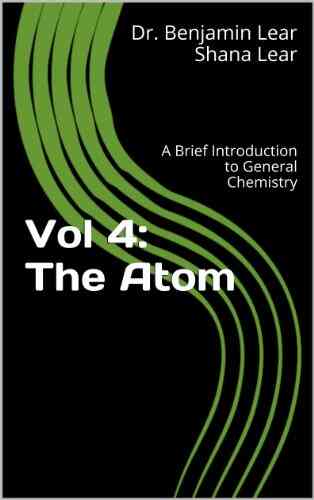Chemistry is often considered one of the fundamental sciences, focusing on the study of matter and its interactions. At the heart of chemistry lies the concept of the atom, the building block of all matter. Understanding the atom and its properties is essential in developing a strong foundation in general chemistry. So, let's dive into the fascinating world of the atom and explore its structure, behavior, and significance in this brief .
What is an Atom?
An atom is the basic unit of matter that retains the chemical properties of an element. It is composed of subatomic particles called protons, neutrons, and electrons. Protons carry a positive charge, neutrons possess no charge, and electrons carry a negative charge. The protons and neutrons are tightly bound in the atom's nucleus, while the electrons orbit around the nucleus in specific energy levels or shells.
The Structure of an Atom
The nucleus, located at the center of the atom, contains protons and neutrons. Protons are positively charged particles, and their number determines the element's atomic number. Neutrons, on the other hand, have no charge and contribute to the atom's mass but not the overall charge. The total number of protons and neutrons in the nucleus is the atom's mass number.
4 out of 5
| Language | : | English |
| File size | : | 409 KB |
| Text-to-Speech | : | Enabled |
| Screen Reader | : | Supported |
| Enhanced typesetting | : | Enabled |
| Word Wise | : | Enabled |
| Print length | : | 7 pages |
Electrons, with their negative charge, revolve around the nucleus in energy levels or shells. The first shell can hold a maximum of two electrons, while the subsequent shells have higher capacities. The distribution of electrons in the shells follows specific rules, such as the octet rule, which states that atoms tend to gain, lose, or share electrons to achieve a stable electron configuration.
The Behavior of Atoms
Atoms tend to interact with each other in various ways, forming chemical bonds. These bonds can be ionic, where electrons are transferred between atoms, or covalent, where electrons are shared between atoms. The nature of these bonds determines the type of interactions atoms have with one another and how they combine to form compounds.
Moreover, atoms have unique properties that differentiate one element from another. These properties include atomic radius, ionization energy, electronegativity, and electron affinity, among others. Understanding these properties allows chemists to predict the behavior and reactivity of different elements.
The Significance of the Atom
The atom is the foundation of chemistry as it provides a framework for understanding the behavior of matter at the molecular and atomic levels. The study of atoms helps us comprehend chemical reactions, how compounds are formed, and even how physical properties, such as melting points and boiling points, arise.
Moreover, the atom's significance extends beyond chemistry. Concepts related to atoms have applications in various fields, including materials science, biology, and even nuclear physics. Understanding the atom is crucial for comprehending the world around us and advancing technology and scientific discoveries.
The atom, the basic building block of matter, is a fundamental concept in general chemistry. Its structure, behavior, and significance shape our understanding of the physical and chemical properties of the universe. With this brief to the atom, you now have a solid foundation to explore the exciting world of chemistry and its applications in our daily lives.








































































